Spain is a modern, multifaceted European country where Roman aqueducts coexist with fibre-optic broadband, and the national pastime toggles somewhere between football and queueing at the town hall. As a parliamentary monarchy and member of the European Union, Spain offers solid legal protections for equality, inclusion, and individual rights—and yes, even the paperwork has improved (mostly).
Spanish society is famously open, family-oriented, and refreshingly tolerant, particularly in its buzzing urban centres and coastal hotspots. While some rural corners still prefer tradition to trendiness, overt intolerance is rare, and nationwide laws firmly uphold the rights of women, minorities, and LGBTQ+ communities.
Add to that a mild climate, postcard-worthy landscapes, and a lifestyle that takes its time (in the best way), and you’ve got a destination that appeals to digital nomads, retirees, and anyone tired of grey weather and overpriced lattes. Whether you’re eyeing the cosmopolitan rhythm of Alicante or the slow charm of Zafra in Extremadura, Spain’s 17 autonomous communities each bring something unique to the table—along with tapas.
Let’s take a complete tour through every region to help you find your perfect fit.
Andalucía
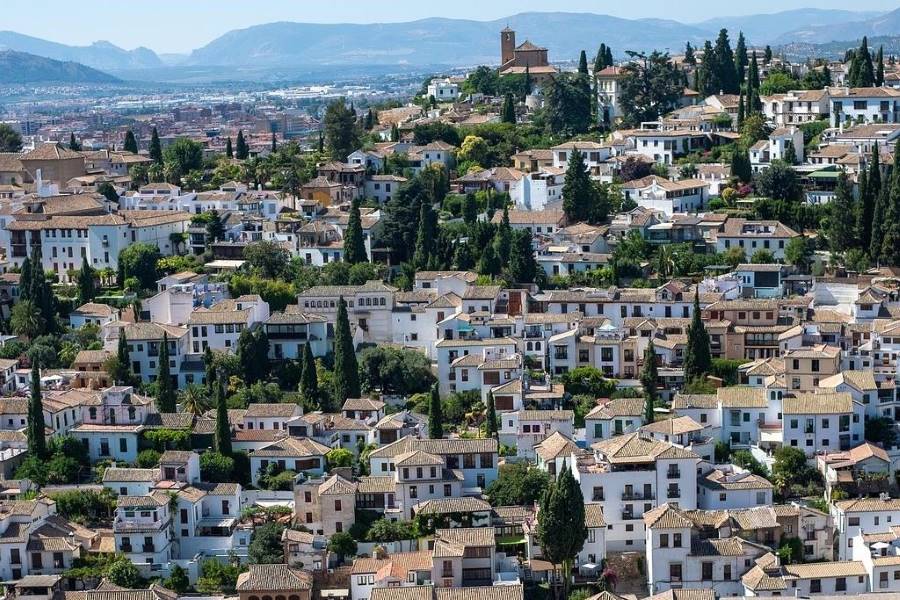
Andalusian Provinces
Almería, Cádiz, Córdoba, Granada, Huelva, Jaén, Málaga, Sevilla
If you’re dreaming of flamenco, Moorish palaces, and sunshine with a side of siesta, Andalucía might just be your soul’s postcode.
Main Characteristics
Andalucía is Spain’s largest and most exuberant region, where history isn’t confined to museums—it’s danced, sung, and served with olives. From the snow-capped Sierra Nevada to the sizzling beaches of the Costa del Sol, Andalucía mixes rugged charm with architectural showstoppers like the Alhambra. Its cultural DNA blends Islamic, Jewish, and Christian legacies—and still manages to leave room for tapas.
Climate
Mediterranean: hot, dry summers and mild winters. Coastal areas are milder; inland zones can see extreme summer heat.
Brief History
A centre of Islamic civilisation during the Middle Ages, Andalucía became part of modern Spain after the Reconquista in the late 15th century. Its architecture and customs reflect a blend of influences.
Current Economy
Andalucía’s economy relies on agriculture (especially olive oil and fruit), tourism, and services, with some industry in agri-food and renewable energy. The GDP per capita is €23,218 (2023), below the national average. Unemployment and average household incomes are lower than in Spain’s wealthiest regions.
Cost of Living in Andalusia
Generally lower than the national average, especially for housing and daily expenses. For a family (couple with one child):
| Expense Category | Andalucía (€/month) | National Average (€/month) |
| Rent (3-bedroom apt) | 700–900 | 950–1,200 |
| Utilities | 110–130 | 130–150 |
| Food | 400–500 | 450–550 |
| Childcare | 250–350 | 300–400 |
| Transportation | 80–120 | 100–140 |
| Total | 1,540–2,000 | 1,930–2,440 |
Figures are approximate and may vary by city and lifestyle.
Political Scene
Currently governed by the centre-right Popular Party (PP). The region has a tradition of alternation between centre-left and centre-right parties.
Customs and Culture (Highlights)
- Flamenco music and dance
- Semana Santa (Holy Week) processions
- Tapas culture
- Whitewashed villages (pueblos blancos)
- The Alhambra of Granada
7 UNESCO World Heritage Sites in Andalusia
- Alhambra, Generalife and Albaicín, Granada (1984, 1994)
- Seville Cathedral, Alcázar and Archivo de Indias in Seville (1987)
- Historic Centre of Córdoba (1984, 1994)
- Doñana National Park (1994)
- Renaissance Monumental Ensembles of Úbeda and Baeza (2003)
- Antequera Dolmens Site (2016)
- Medina Azahara (2018)
Environmental Quality
Varies: coastal and protected natural parks are well-preserved, while some areas face pollution and water scarcity.
Official Languages
Spanish (Castilian) is the only official language (with a hint of Southern accent) and the sole language of instruction.
Pros and Cons Table for Settling in Andalucía
| Pros | Cons |
| Warm climate and many sunny days | High summer temperatures (can be extreme) |
| Rich culture and historic cities | Lower average incomes and higher unemployment |
| Affordable cost of living | Fewer high-skilled job opportunities compared to more industrialized regions |
| Welcoming, family-oriented society | Public services can be stretched in some municipalities |
| Excellent cuisine and leisure options | Some areas suffer from drought/water issues |
- Andalusia Tourism –Official site
Aragón
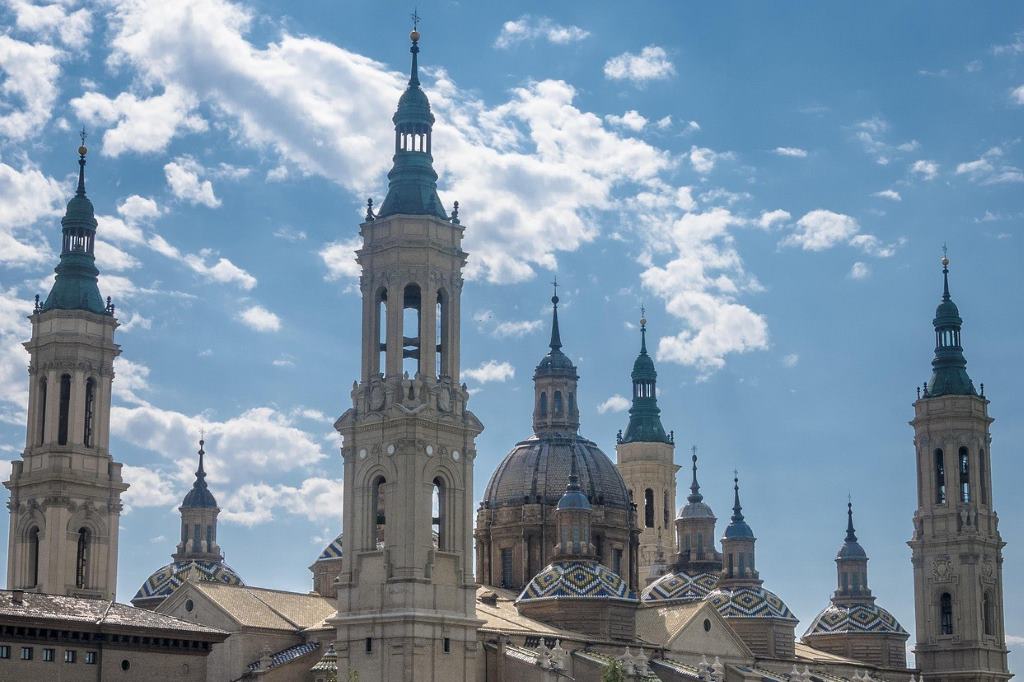
Aragon Provinces
Huesca, Teruel, Zaragoza
Even if you can’t pronounce Zaragoza on the first try, you’ll be forgiven once you see the views (and the real estate prices).
Main Characteristics
Aragón is Spain’s quietly confident inland gem, stretching from the Pyrenees to the Ebro valley with castles, Roman ruins, and plenty of elbow room. It’s got mountains for skiing, plains for growing truffles, and enough historic intrigue to keep history buffs and Game of Thrones fans equally engaged. Zaragoza, the capital, brings a splash of urban buzz to this otherwise laid-back region.
Main Characteristics
Aragón is a landlocked region in north-eastern Spain, known for its Pyrenean mountains, medieval towns, and the vibrant city of Zaragoza. Its landscape ranges from alpine valleys to dry plains.
Climate
Continental Mediterranean: hot summers, cold winters, and low rainfall, especially in the Ebro valley.
Brief History
Once the core of the medieval Kingdom of Aragón, the region played a major role in the formation of Spain. Its historical legacy is visible in its castles, cathedrals, and traditions.
Current Economy
Aragón’s economy is based on agriculture, automotive and logistics industries, and renewable energy. GDP per capita is €29,000 (2023), slightly above the national average. Employment rates are relatively stable, and the region is known for a strong industrial base.
Cost of Living in Aragon
Below the national average, especially outside Zaragoza. For a family (couple with one child):
| Expense Category | Aragón (€/month) | National Average (€/month) |
| Rent (3-bedroom apt) | 650–850 | 950–1,200 |
| Utilities | 110–130 | 130–150 |
| Food | 400–500 | 450–550 |
| Childcare | 220–320 | 300–400 |
| Transportation | 80–110 | 100–140 |
| Total | 1,460–1,910 | 1,930–2,440 |
Political Scene
Currently governed by the centre-right Popular Party (PP), often in coalition with regionalist parties.
Customs and Culture (Highlights)
- Fiestas del Pilar in Zaragoza
- Pyrenean traditions and folklore
- Mudejar architecture
- Renowned gastronomy (lamb, truffles, wine)
- Outdoor sports (skiing, hiking)
2 UNESCO World Heritage Sites in Aragon
Environmental Quality
High in the Pyrenees and natural parks; some areas face water scarcity and depopulation.
Official Languages
Spanish is the only official language, with Aragonese and Catalan recognised in specific localities.
Pros and Cons Table for Settling in Aragon
| Pros | Cons |
| Affordable cost of living | Rural depopulation in some areas |
| Safe, peaceful environment | Cold winters in many areas |
| Strong industrial and logistics sectors | Limited international flight connections |
| Rich historical and natural heritage | Some areas face water scarcity |
| Excellent access to outdoor activities | Smaller expat communities outside Zaragoza |
Asturias – Comunidad Autónoma del Principado de Asturias
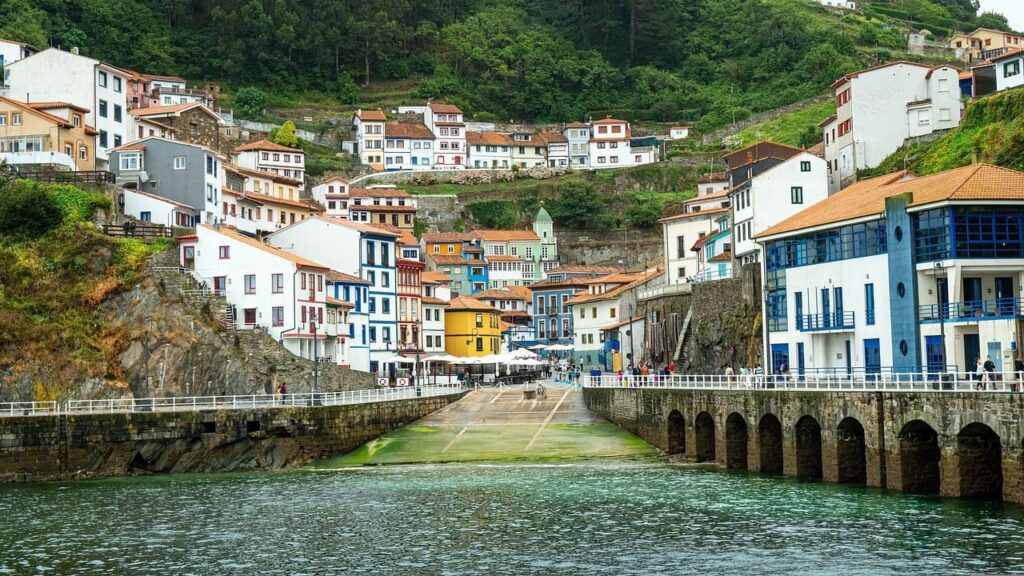
Single-province autonomous community
Province Capital: Oviedo. Other main cities: Gijón, Avilés, and Langreo.
Want lush green hills, Celtic traditions, and cider that’s poured from a surprising height? Asturias has you covered.
Main Characteristics
This northern region is as green as Ireland and nearly as misty, but far more likely to serve you fabada instead of boiled cabbage. Asturias is known for its rugged coastline, dramatic mountains, and cider poured theatrically from arm’s length (really). It has a strong regional identity, a love for nature, and a refreshingly unflashy lifestyle—with views you’ll never get tired of.
Climate
Oceanic: mild, wet winters and cool, rainy summers.
Brief History
Asturias was the cradle of the Christian Reconquista and retains a strong regional identity. It has a long mining and industrial tradition.
Current Economy
The economy is based on industry (steel, mining), agriculture, fishing, and tourism. GDP per capita is €25,000 (2023), close to the national average. The region faces demographic challenges due to population ageing.
Cost of Living in Asturias
Below the national average, especially outside Gijón and Oviedo. For a family (couple with one child):
| Expense Category | Asturias (€/month) | National Average (€/month) |
| Rent (3-bedroom apt) | 600–800 | 950–1,200 |
| Utilities | 110–130 | 130–150 |
| Food | 380–480 | 450–550 |
| Childcare | 220–320 | 300–400 |
| Transportation | 70–110 | 100–140 |
| Total | 1,380–1,840 | 1,930–2,440 |
Political Scene
Currently governed by the centre-left Spanish Socialist Workers’ Party (PSOE).
Customs and Culture (Highlights)
- Cider houses and traditional “espicha” gatherings
- Bagpipe music and Asturian folklore
- Pre-Romanesque architecture
- Natural parks and wildlife
- Seafood and bean stews
- UNESCO World Heritage Site: Monuments of Oviedo and the Kingdom of Asturias (1985)
Environmental Quality
Very high: abundant green spaces, clean air, and protected natural parks.
Official Languages
Spanish is the only official language; Asturian (Bable) is recognised and promoted.
Pros and Cons Table for Settling in Asturias
| Pros | Cons |
| Outstanding natural environment | Rainy, cool climate may not suit everyone |
| Affordable cost of living | Population aging and low birth rate |
| Rich gastronomy and traditions | Fewer international job opportunities |
| Safe, family-friendly cities | Smaller expat communities |
| Excellent access to nature and outdoor sports | Some areas are remote or have limited services |
Baleares (Balearic Islands)
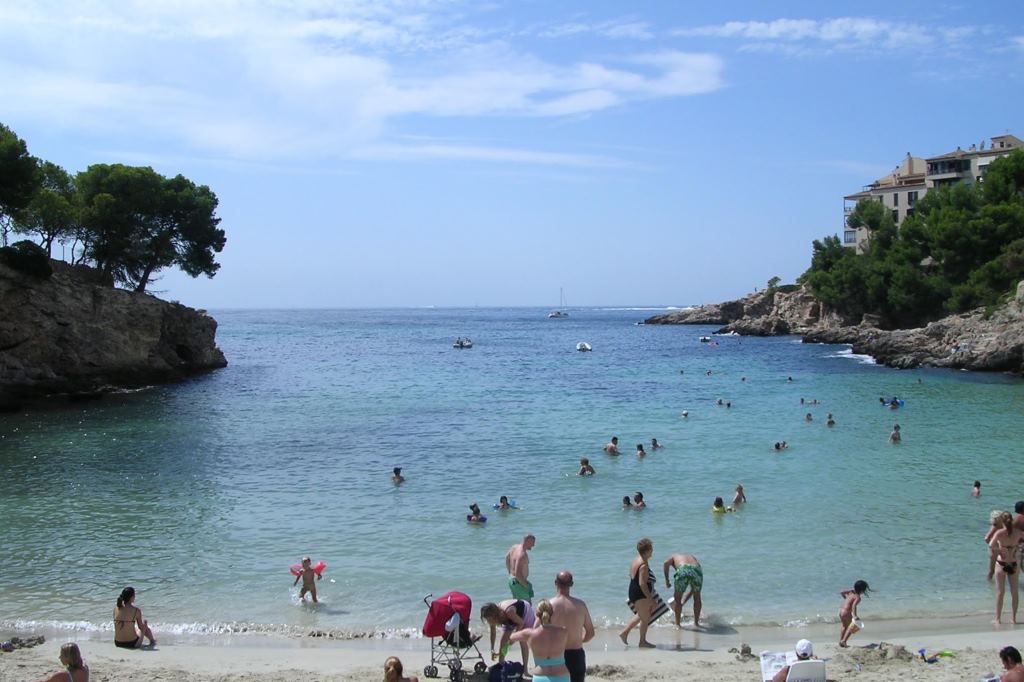
Single-province autonomous community
Yes, there’s more to the Balearics than DJs and overpriced cocktails—though Ibiza will happily provide both.
Main Characteristics
This Mediterranean archipelago includes the islands of Mallorca, Menorca, Ibiza, Formentera and Cabrera—each with its own vibe ranging from quiet countryside to all-night rave.
The islands offer a sun-soaked lifestyle, a multilingual population, and surprisingly good public services for somewhere that also sells inflatable flamingos in every shop. Expect sea, but also inland views, great food, and a strong presence of local languages—Mallorquín, Menorquín and Eivissenc—which are regional varieties of Catalan, co-official with Spanish and deeply rooted in each island’s identity and education system.
Climate
Mediterranean: hot, dry summers and mild, wet winters.
Brief History
Historically influenced by Phoenicians, Romans, Moors, and Catalans, the islands became part of the Crown of Aragon in the Middle Ages and later integrated into Spain.
Current Economy
The economy is centred on tourism, hospitality, and services, with some agriculture (almonds, olives, wine). GDP per capita is €31,000 (2023), above the national average, but seasonal employment is common.
Cost of Living in the Balearic Islands
Higher than the national average, especially for housing in tourist hotspots. For a family (couple with one child):
| Expense Category | Baleares (€/month) | National Average (€/month) |
| Rent (3-bedroom apt) | 1,200–1,600 | 950–1,200 |
| Utilities | 130–160 | 130–150 |
| Food | 450–600 | 450–550 |
| Childcare | 350–450 | 300–400 |
| Transportation | 100–140 | 100–140 |
| Total | 2,230–2,950 | 1,930–2,440 |
Political Scene
Currently governed by the centre-right Popular Party (PP).
Customs and Culture (Highlights)
- Traditional fiestas and folk dances
- Gastronomy: ensaimada, sobrasada
- Multilingual society (Catalan and Spanish)
- Maritime festivals
3 UNESCO World Heritage sites in the Balearic Islands:
- Ibiza, Biodiversity and Culture
- Cultural Landscape of Serra de Tramuntana (Mallorca)
- Talayotic Menorca: Cyclopean Culture of the Balearic Islands
Environmental Quality
Generally high, but mass tourism pressures local resources.
Official Languages
Catalan and Spanish are both official; Catalan is widely used in education and administration.
Pros and Cons Table for Settling in Baleares
| Pros | Cons |
| Beautiful landscapes and beaches | High cost of living, especially housing |
| Cosmopolitan, international environment | Seasonal employment and income variability |
| Mild climate year-round | Tourist crowds in peak season |
| Rich local traditions and cuisine | Limited public transport on smaller islands |
| Strong focus on sustainability | Some areas face water scarcity |
Canarias (Canary Islands)
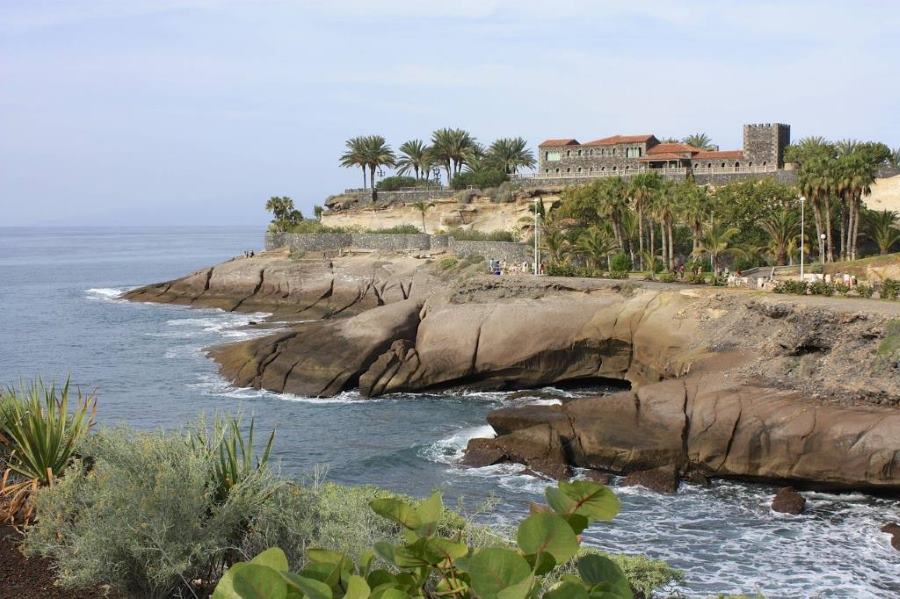
Canary Archipelago – 2 Provinces
- Las Palmas (islands of Gran Canaria, Fuerteventura, Lanzarote)
- Santa Cruz de Tenerife (islands of Tenerife, La Palma, La Gomera, El Hierro, La Graciosa)
Spanish by law, subtropical by nature—the Canaries are where Europeans go to escape winter… and sometimes stay forever.
Main Characteristics
Floating off the northwest coast of Africa, the Canary Islands are a volcanic blend of dramatic scenery, beaches, and biosphere reserves. It’s like Hawaii met Europe and decided to charge less rent. With tax breaks, year-round warmth, and a no-hurry lifestyle, this archipelago offers one of Spain’s most laid-back expat havens—provided you don’t mind the occasional lava field.
Climate
Subtropical: mild temperatures year-round, with little seasonal variation. Coastal microclimates vary between islands.
Brief History
Originally inhabited by the Guanches, the islands were conquered by Castile in the 15th century. They have since been a key Atlantic outpost and enjoy a unique cultural blend shaped by European, African, and Latin American influences.
Current Economy
Tourism dominates, along with agriculture (bananas, tomatoes), trade, and services. The islands are a special economic zone with tax advantages. GDP per capita is €21,500 (2023), below the national average.
Cost of Living in the Canaries
Generally lower than the national average, but higher on main islands and tourist centres. For a family (couple with one child):
| Expense Category | Canarias (€/month) | National Average (€/month) |
| Rent (3-bedroom apt) | 700–1,000 | 950–1,200 |
| Utilities | 100–130 | 130–150 |
| Food | 400–500 | 450–550 |
| Childcare | 250–350 | 300–400 |
| Transportation | 80–120 | 100–140 |
| Total | 1,530–2,100 | 1,930–2,440 |
Political Scene
Currently governed by the centre-left Spanish Socialist Workers’ Party (PSOE) in coalition.
Customs and Culture (Highlights)
- Carnival of Santa Cruz de Tenerife
- Canarian folk music and dance
- Unique cuisine (papas arrugadas, mojo)
- Biosphere reserves and national parks
- Multicultural influences from Africa, Latin America, and Europe
4 UNESCO World Heritage Sites in the Canary Islands
- Historic town of San Cristóbal de La Laguna (1999)
- Garajonay National Park (1986)
- Risco Caído and the Sacred Mountains of Gran Canaria Cultural Landscape (2019)
- Teide National Park (2007)
Environmental Quality
High in protected areas; some urban and coastal zones experience environmental stress from tourism and development.
Official Languages
Spanish is the only official language.
Pros and Cons Table for Settling in Canarias
| Pros | Cons |
| Mild climate all year | Job market heavily reliant on tourism |
| Lower cost of living than mainland cities | Geographic isolation from mainland Europe |
| Diverse natural landscapes | Limited career options in some sectors |
| Tax advantages and special economic status | Some areas face water supply challenges |
| Welcoming, multicultural society | Public services can be stretched in tourist hotspots |
Cantabria
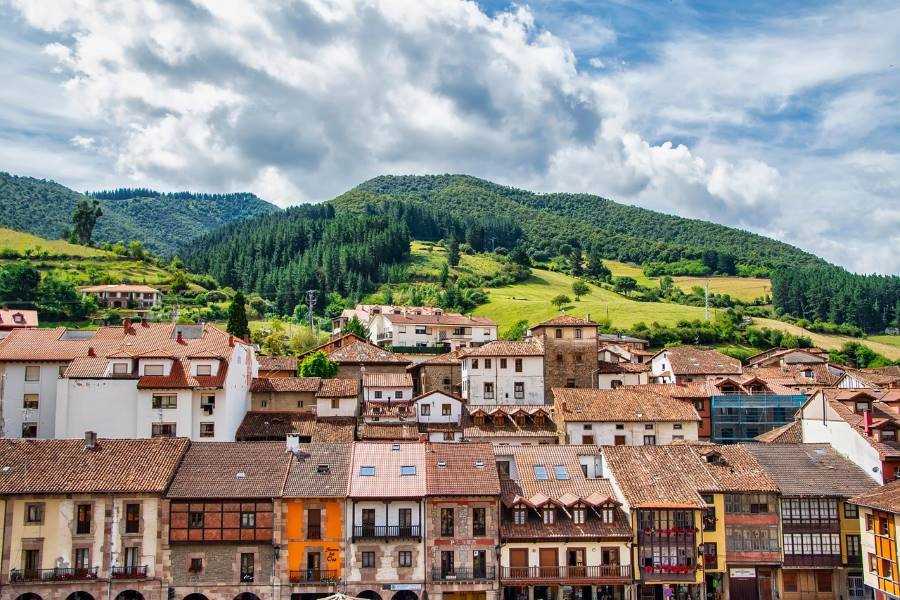
Single-province autonomous community
The capital of Cantabria is Santander, and other main cities include Torrelavega, Castro Urdiales, and Camargo.
If your dream of Spain includes green hills, prehistoric caves, and anchovies, then you might be a Cantabrian at heart.
Main Characteristics
Tucked along the northern coast, Cantabria is lush, serene, and occasionally a little soggy. It’s where mountains meet the sea, surfers meet cows, and nature reserves quietly outnumber shopping malls. The capital, Santander, offers elegant charm, while the countryside delivers medieval villages, great cheese, and some of the oldest cave art in Europe.
Climate
Oceanic: mild, wet winters and cool, rainy summers.
Brief History
With prehistoric roots evident in the Altamira caves, Cantabria was historically part of the Kingdom of Castile. It retains a distinct regional identity and strong maritime heritage.
Current Economy
Key sectors include industry (chemicals, automotive), agriculture, and tourism. GDP per capita is €27,000 (2023), close to the national average. While industrial employment remains important, the service sector has grown significantly.
Cost of Living in Cantabria
Slightly below the national average, particularly outside the capital. For a family (couple with one child):
| Expense Category | Cantabria (€/month) | National Average (€/month) |
| Rent (3-bedroom apt) | 650–850 | 950–1,200 |
| Utilities | 110–130 | 130–150 |
| Food | 400–500 | 450–550 |
| Childcare | 220–320 | 300–400 |
| Transportation | 70–110 | 100–140 |
| Total | 1,450–1,910 | 1,930–2,440 |
Political Scene
Currently governed by the centre-right Popular Party (PP).
Customs and Culture (Highlights)
- Traditional mountain festivals
- Local cheeses and anchovies
- Maritime traditions and fishing villages
- Surfing and outdoor adventure sports
UNESCO World Heritage Sites in Cantabria
- Cave of Altamira and Palaeolithic Cave Art of Northern Spain
- Routes of Santiago de Compostela: Camino Francés (the French Path) and Routes of Northern Spain
Environmental Quality
Very high: abundant green spaces, clean air, and a protected, rugged coastline. Natural parks and ecological reserves are well maintained.
Official Languages
Spanish is the only official language.
Pros and Cons Table for Settling in Cantabria
| Pros | Cons |
| Outstanding natural environment | Rainy, cool climate may not suit everyone |
| Affordable cost of living | Smaller job market in specialized sectors |
| Rich gastronomy and traditions | Limited international flight connections |
| Safe, family-friendly cities | Some areas are remote or have limited services |
| Excellent access to nature and outdoor sports | Smaller expat communities |
Castilla-La Mancha
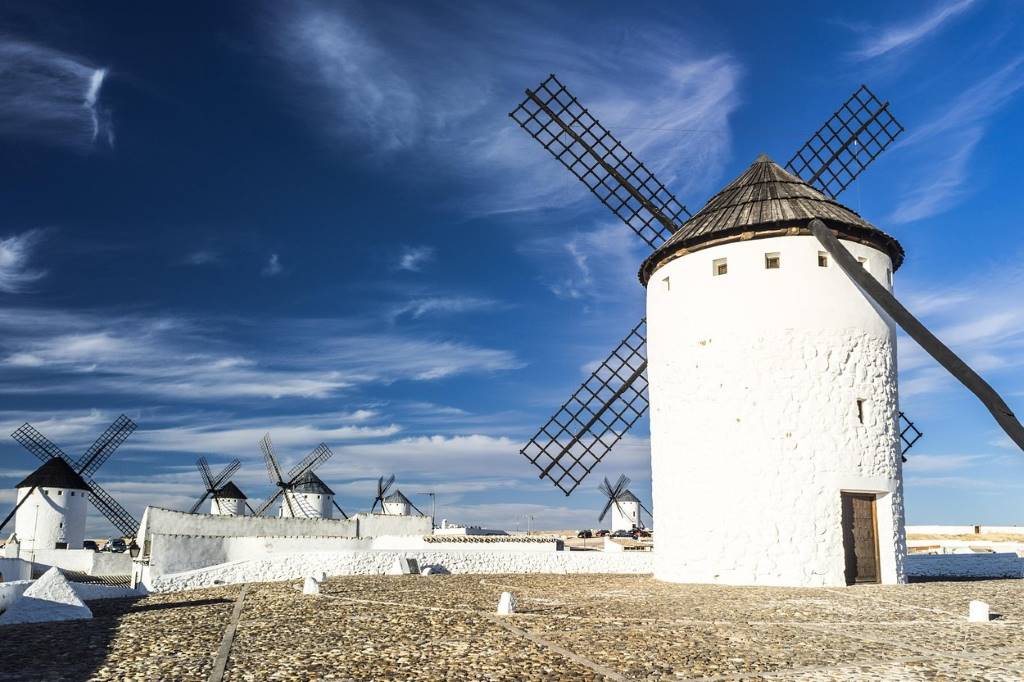
Provinces in Castile-La Mancha
Albacete, Ciudad Real, Cuenca, Guadalajara, Toledo
Best known for windmills, Manchego cheese, and a literary madman—this region offers more than just Don Quixote cosplay.
Main Characteristics
Castilla-La Mancha is Spain’s sprawling central plateau, where sun-drenched plains meet storybook towns and vineyards stretch to the horizon. It’s a region for those seeking peace, authenticity, and affordable housing with room for a vegetable patch. Life moves slowly here—but with good wine and medieval castles nearby, you won’t mind.
Climate
Continental Mediterranean: hot, dry summers and cold winters.
Brief History
Historically part of the Kingdom of Castile, Castilla-La Mancha is steeped in medieval and Renaissance history. Its towns and castles often date back to the Reconquista and beyond, with Toledo once serving as Spain’s imperial capital.
Current Economy
Agriculture (notably wine, saffron, cereals), food processing, and renewable energy are the mainstays of the region’s economy. GDP per capita is €22,000 (2023), below the national average. While rural depopulation is a challenge, the region is investing in green energy and tourism.
Cost of Living in Castile-La Mancha
Lower than the national average. For a family (couple with one child):
| Expense Category | Castilla-La Mancha (€/month) | National Average (€/month) |
| Rent (3-bedroom apt) | 600–800 | 950–1,200 |
| Utilities | 110–130 | 130–150 |
| Food | 400–500 | 450–550 |
| Childcare | 220–320 | 300–400 |
| Transportation | 70–110 | 100–140 |
| Total | 1,400–1,860 | 1,930–2,440 |
Political Scene
Currently governed by the centre-left Spanish Socialist Workers’ Party (PSOE).
Customs and Culture (Highlights)
- Windmills and Don Quixote heritage
- Manchego cheese and regional wines
- Medieval castles and hilltop towns
- Semana Santa and local fiestas
- Traditional crafts (ceramics, embroidery)
3 UNESCO World Heritage Sites in Castile-La Mancha
- Historic City of Toledo (1986)
- Historic Walled Town of Cuenca (1996)
- Ancient and Primeval Beech Forests of the Carpathians and Other Regions of Europe (2017)
Environmental Quality
High in natural parks and rural areas. However, certain zones face water scarcity and the effects of rural depopulation.
Official Languages
Spanish is the only official language.
Pros and Cons Table for Settling in Castilla-La Mancha
| Pros | Cons |
| Affordable cost of living | Fewer job opportunities in specialized fields |
| Rich historical and literary heritage | Hot summers and cold winters |
| Peaceful, safe rural environment | Rural depopulation in some areas |
| Excellent local food and wines | Limited international communities |
| Good access to Madrid by train | Some areas have limited public transport |
Castilla y León
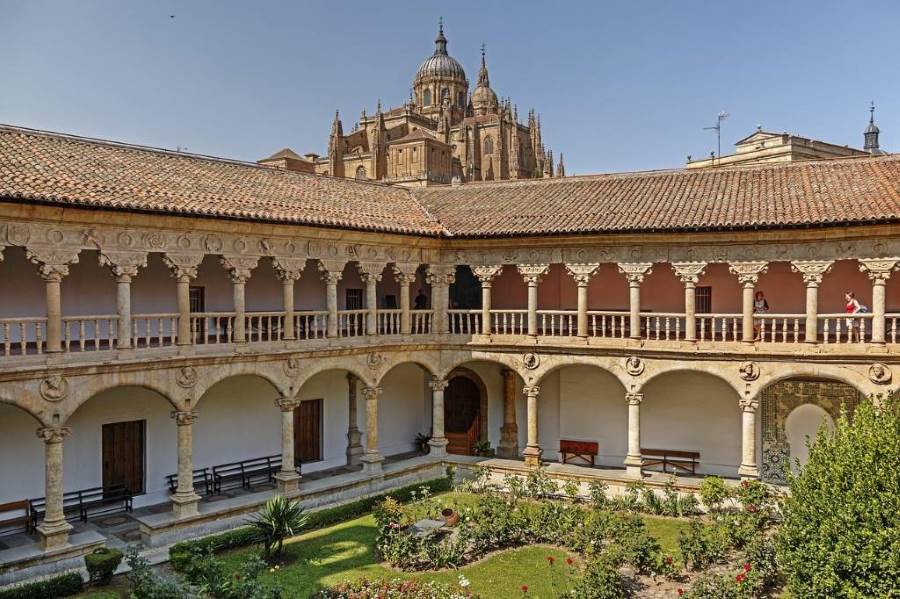
Provinces in Castile and Leon
Ávila, Burgos, León, Palencia, Salamanca, Segovia, Soria, Valladolid, Zamora
If you like your history heavy, your lamb roasted, and your scenery medieval, Castilla y León will feel like home.
Main Characteristics
Spain’s largest region by land (and by number of UNESCO sites), Castilla y León is a treasure chest of Romanesque churches, Gothic cathedrals, and golden-stoned cities. Think Salamanca, Burgos, Segovia—all charm, no nonsense. It’s spacious, tranquil, and ideal for anyone who loves good wine, brisk winters, and short queues at the bakery.
Climate
Continental: cold winters, hot summers, and low rainfall.
Brief History
This region was the historical core of the medieval kingdoms of León and Castile, which played a crucial role in the Reconquista and the unification of Spain. Many of its cities, like Salamanca and Burgos, boast centuries-old cathedrals, universities, and castles.
Current Economy
The economy relies on agriculture, food processing, renewable energy, and tourism. GDP per capita is €26,000 (2023), close to the national average. However, rural depopulation and an ageing population present long-term demographic challenges.
Cost of Living in Castile-Leon
Lower than the national average, especially outside major cities. For a family (couple with one child):
| Expense Category | Castilla y León (€/month) | National Average (€/month) |
| Rent (3-bedroom apt) | 600–850 | 950–1,200 |
| Utilities | 110–130 | 130–150 |
| Food | 400–500 | 450–550 |
| Childcare | 220–320 | 300–400 |
| Transportation | 80–120 | 100–140 |
| Total | 1,410–1,920 | 1,930–2,440 |
Political Scene
Currently governed by the centre-right Popular Party (PP) in coalition with a right-wing regional party.
Customs and Culture (Highlights)
- Semana Santa processions in Valladolid and León
- Romanesque and Gothic cathedrals
- Castilian cuisine (roast lamb, cured meats)
- Wine regions (Ribera del Duero, Rueda)
- Historic university cities like Salamanca
8 UNESCO World Heritage Sites in Castile and León
- Old Town of Ávila with its Extra-Muros Churches (1985)
- Old Town of Segovia and its Aqueduct (1985)
- Old City of Salamanca (1988), including its University and Cathedral
- Burgos Cathedral (1984)
- Las Médulas – Gold mining landscape (1997)
- Archaeological Site of Atapuerca (2000)
- Route of Santiago de Compostela through Castile and Leon (1993)
- Siega Verde – Paleolithic rock art in the Duero basin (2010)
Environmental Quality
High in natural parks and rural areas. However, some areas suffer from ageing infrastructure and depopulation.
Official Languages
Spanish is the only official language.
Pros and Cons Table for Settling in Castilla y León
| Pros | Cons |
| Affordable cost of living | Rural depopulation and aging population |
| Rich historical and cultural heritage | Cold winters, especially in the north |
| High environmental quality in many areas | Fewer job opportunities in specialized fields |
| Safe, peaceful environment | Limited nightlife and cultural offerings in smaller towns |
| Excellent local cuisine and wines | Some areas have limited public transport |
Cataluña (Catalonia)
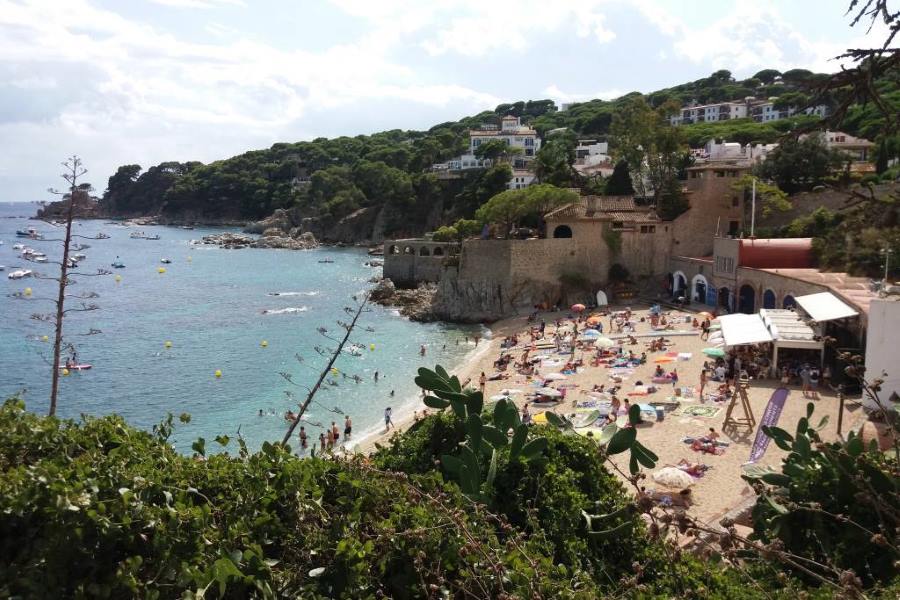
Catalonian Provinces
Barcelona, Girona, Lleida, Tarragona
Let’s just say in Catalonia, you can follow up your Pyrenean hike with cava by the beach and not feel the least bit rushed.
Main Characteristics
Cataluña is a region that does it all—usually with flair and a firm opinion. From the modernist marvels of Barcelona to quiet stone villages in the hills of Lleida, it offers a blend of innovation, culture, and geography that’s hard to beat. Fiercely proud and famously festive, Cataluña is where Roman roads, medieval monasteries, and 5G co-exist in bilingual harmony.
Climate
Mediterranean: hot, dry summers and mild, wet winters. Cooler in the Pyrenees.
Brief History
Catalonia was a medieval principality and part of the Crown of Aragon. It has long maintained a distinct language and cultural tradition. In modern times, it has played a key role in Spain’s industrial development and remains a hub for innovation and tourism.
Current Economy
One of Spain’s wealthiest regions, Cataluña boasts a strong industrial base, services sector, and technological innovation. It is a European leader in exports, logistics, and business. GDP per capita is €33,000 (2023), well above the national average.
Cost of Living in Catalonia
Higher than the national average, especially in Barcelona. For a family (couple with one child):
| Expense Category | Cataluña (€/month) | National Average (€/month) |
| Rent (3-bedroom apt) | 1,200–1,700 | 950–1,200 |
| Utilities | 130–160 | 130–150 |
| Food | 450–600 | 450–550 |
| Childcare | 350–450 | 300–400 |
| Transportation | 100–150 | 100–140 |
| Total | 2,230–3,060 | 1,930–2,440 |
Political Scene
Currently governed by a centre-left coalition led by pro-Catalan independence parties. Political tensions around autonomy and independence have impacted regional and national politics in recent years.
Customs and Culture (Highlights)
- Castells (human towers)
- Modernist architecture (Gaudí, Barcelona)
- Catalan cuisine (pa amb tomàquet, escalivada, calçots)
- Sant Jordi’s Day literary tradition
- Vibrant arts and music scene
4 UNESCO World Heritage Sites in Catalonia:
- Works of Antoni Gaudí
- Poblet Monastery
- Archaeological Ensemble of Tarraco
- Catalan Romanesque Churches of the Vall de Boí
Environmental Quality
High in rural and mountainous areas. Urban areas face challenges with density and tourism-related pressure.
Official Languages
Catalan and Spanish are both official. Catalan is predominant in public administration and education.
Pros and Cons Table for Settling in Cataluña
| Pros | Cons |
| Strong economy and job market | High cost of living, especially in Barcelona |
| Cosmopolitan, international environment | Political tensions over independence |
| Excellent public services and infrastructure | Crowded urban areas |
| Rich culture, arts, and gastronomy | Some areas face housing shortages |
| Mediterranean lifestyle and beaches | Regional language predominance in education |
Comunidad de Madrid
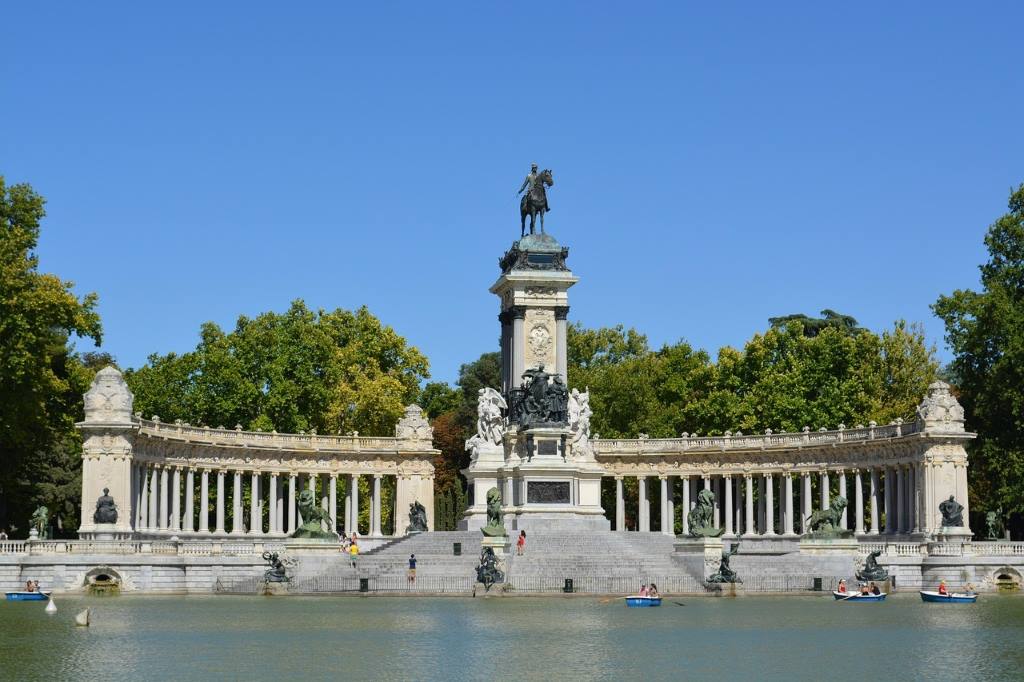
Single-Province Region of Madrid
If you want Spain’s biggest job market, cultural firepower, and more traffic than you remember asking for—Madrid awaits.
Main Characteristics
Madrid is more than a city—it’s an entire region of history, museums, tapas, and political hot takes.
While Madrid city, the capital dazzles with palaces and world-class art, surrounding towns such as Alcalá de Henares, Getafe, Leganés, Móstoles, and Fuenlabrada, offer a gentler pace (and cheaper rent). Well-connected, cosmopolitan, and rarely dull, this is Spain’s economic engine—and its beating cultural heart.
Climate
Continental Mediterranean: hot, dry summers and cold winters.
Brief History
Madrid became the capital of Spain in the 16th century under Philip II. Since then, it has grown into a major European political, economic, and cultural centre, with a deeply multicultural identity.
Current Economy
As Spain’s wealthiest region, Madrid has a highly diversified economy. Sectors include finance, professional services, IT, logistics, tourism, and public administration. GDP per capita is €38,000 (2023), the highest in Spain.
Cost of Living in Madrid
The highest in Spain, especially in central Madrid. For a family (couple with one child):
| Expense Category | Madrid (€/month) | National Average (€/month) |
| Rent (3-bedroom apt) | 1,400–2,000 | 950–1,200 |
| Utilities | 140–170 | 130–150 |
| Food | 550–700 | 450–550 |
| Childcare | 400–600 | 300–400 |
| Transportation | 120–180 | 100–140 |
| Total | 2,610–3,650 | 1,930–2,440 |
Political Scene
Currently governed by the centre-right Popular Party (PP), Madrid is a stronghold of conservative politics with a focus on liberal economic policies and public-private service models.
Customs and Culture (Highlights)
- World-class museums (Prado, Reina Sofía, Thyssen)
- Diverse gastronomy and international cuisine
- Major festivals (San Isidro, Madrid Pride)
- Historic quarters and royal landmarks
- Parks and green spaces (Retiro, Casa de Campo)
3 UNESCO World Heritage Sites in Comunidad de Madrid:
- Monastery and Site of the Escurial, Madrid
- University and Historic Precinct of Alcalá de Henares
- Paseo del Prado and Buen Retiro, a landscape of Arts and Sciences
Environmental Quality
Generally good in most areas, though central zones face challenges with traffic, air pollution, and population density.
Official Languages
Spanish is the only official language.
Pros and Cons Table for Settling in Comunidad de Madrid
| Pros | Cons |
| Strong job market and international business | High cost of living, especially housing |
| Excellent public services and infrastructure | Traffic congestion and air pollution |
| Rich cultural life and entertainment | Can be crowded and fast-paced |
| Multicultural, cosmopolitan environment | Hot summers and cold winters |
| Well-connected for travel | Some areas have high demand for schools, especially international ones |
Comunidad Valenciana
Valencian Provinces:
Castellón, Valencia and Alicante.
Sunshine? Check. Paella? Of course.
Affordable seaside living?
Welcome to the Comunidad Valenciana.
Main Characteristics
This region is where Mediterranean dreams meet reasonable monthly budgets. It’s famous for fiestas, citrus groves, and a coast that keeps calling people back.
With a healthy mix of urban vibrancy and small-town charm, the Comunidad Valenciana is a favourite for expats, digital nomads, and anyone allergic to gloomy weather.
Climate
Mediterranean: hot, dry summers and mild winters, with plentiful sunshine year-round.
Brief History
Historically part of the Crown of Aragon, the region developed a distinct identity and language. It has a legacy of Roman, Islamic, and Christian influences and is home to iconic festivals such as Las Fallas and Moros y Cristianos.
Current Economy
Tourism, agriculture (especially citrus fruits and rice), industry, and services are key sectors. GDP per capita is €25,500 (2023), slightly below the national average, with strong performance in hospitality, logistics, and agriculture.
Cost of Living in the Valencian Region
Below the national average, particularly outside Valencia city. For a family (couple with one child):
| Expense Category | C. Valenciana (€/month) | National Average (€/month) |
| Rent (3-bedroom apt) | 800–1,200 | 950–1,200 |
| Utilities | 110–130 | 130–150 |
| Food | 400–500 | 450–550 |
| Childcare | 250–350 | 300–400 |
| Transportation | 90–130 | 100–140 |
| Total | 1,650–2,310 | 1,930–2,440 |
Political Scene
Currently governed by the centre-right Popular Party (PP), with an emphasis on economic revitalisation and water management.
Customs and Culture (Highlights)
- Las Fallas festival in Valencia
- Paella and rich Mediterranean gastronomy
- Beaches and resorts along Costa Blanca, Costa del Azahar
- Valencian language and folklore
- Historic castles, modernist architecture, and scientific innovation
2 UNESCO World Heritage Sites in the Valencian Community:
- La Lonja de la Seda de Valencia (The Silk Exchange)
- Rock Art of the Mediterranean Basin on the Iberian Peninsula
Environmental Quality
Generally high, with Blue Flag beaches and protected parks. Some coastal areas experience seasonal overcrowding and environmental strain.
Official Languages
Spanish and Valencian are both official languages in the region. While both have deep historical roots, the province of Alicante stands out as the area where Valencian gradually blends into Castilian, with Spanish being the predominant language in the southern municipalities. Usage of each language varies by town and generation, reflecting the region’s bilingual and culturally rich character.
Pros and Cons Table for Settling in Comunidad Valenciana
| Pros | Cons |
| Mediterranean climate and beaches | Some areas face summer tourist crowds |
| Affordable cost of living | Water scarcity in some municipalities |
| Rich culture, festivals, and gastronomy | Regional language mandatory in specific subjects in education (although not predominant) |
| Good public services and infrastructure | Fewer high-tech jobs than in Madrid/Barcelona |
| Welcoming, international communities | Some areas have seasonal employment |
- Tourism Comunidad Valenciana -Official Site
- Tourism Costa Blanca (Alicante province) – Official Site
Extremadura
Provinces of Extremadura
Badajoz and Cáceres.
History, ham, and hectares—you’ll find them all in Spain’s most underrated region.
Main Characteristics
Extremadura flies under the radar, but those in the know praise its Roman ruins, low cost of living, and countryside that looks like it came with its own sound effects. Life here is rural, real, and rooted in tradition. If you’re into nature, peace, and architecture older than your home country, this might be your perfect match.
Climate
Continental Mediterranean: hot, dry summers and mild to cold winters.
Brief History
Extremadura has a deep Roman and medieval heritage. It was home to several famous Spanish conquistadors, including Hernán Cortés and Francisco Pizarro. Mérida, the regional capital, was one of the most important Roman cities in Hispania.
Current Economy
The economy of Extremadura relies heavily on agriculture (notably Iberian ham, olives, and tobacco), renewable energy (solar and hydro), and rural tourism. Despite its potential, GDP per capita remains the lowest in Spain at €20,000 (2023).
Cost of Living in Extremadura
Extremadura offers the lowest cost of living in Spain. For a family (couple with one child):
| Expense Category | Extremadura (€/month) | National Average (€/month) |
| Rent (3-bedroom apt) | 500–700 | 950–1,200 |
| Utilities | 100–120 | 130–150 |
| Food | 350–450 | 450–550 |
| Childcare | 200–300 | 300–400 |
| Transportation | 60–100 | 100–140 |
| Total | 1,210–1,670 | 1,930–2,440 |
Political Scene
Currently governed by the centre-right Popular Party (PP). Regional politics often focus on rural development, water resource management, and infrastructure upgrades.
Customs and Culture (Highlights)
- Semana Santa in Cáceres and Badajoz
- Iberian ham and hearty local cuisine
- Traditional folk dances and festivals
- Birdwatching and nature tourism in Monfragüe and Sierra de Gata
3 UNESCO World Heritage Sites in Extremadura:
- Old Town of Cáceres
- Archaeological Roman Ensemble of Mérida
- Royal Monastery of Santa María de Guadalupe
Environmental Quality
Extremadura boasts one of the highest levels of environmental quality in Spain, with expansive natural parks, low pollution levels, and abundant biodiversity.
Official Languages
Spanish is the only official language.
Pros and Cons Table for Settling in Extremadura
| Pros | Cons |
| Lowest cost of living in Spain | Fewer job opportunities, especially for professionals |
| Rich natural and historical heritage | Hot summers and some rural isolation |
| Peaceful, safe rural environment | Limited international communities |
| Excellent local food and wines | Some areas face depopulation |
| High environmental quality | Limited public transport |
Galicia
Provinces of Galicia
A Coruña, Lugo, Ourense, Pontevedra
A Celtic-flavoured corner of Spain where seafood is sacred and the rain feels oddly poetic.
Main Characteristics
Galicia is green, misty, and full of heart. Its coastline folds into fjord-like rías, its cities are modest and soulful, and its food… well, let’s just say you’ll never eat octopus the same way again.
Between its pilgrim trails and dramatic cliffs, Galicia offers a deep breath of fresh Atlantic air.
Climate
Oceanic: mild, wet winters and cool, rainy summers, especially along the coast.
Brief History
Galicia has ancient Celtic roots and was an early Christian stronghold. It formed a medieval kingdom and later integrated into the Crown of Castile. Its capital, Santiago de Compostela, remains a spiritual hub for pilgrims worldwide.
Current Economy
Galicia’s economy is supported by fishing, agriculture, shipbuilding, and growing tourism. The region has a GDP per capita of €24,500 (2023), slightly below the national average.
Cost of Living in Galicia
Generally lower than the national average, especially outside major cities like A Coruña and Vigo. For a family (couple with one child):
| Expense Category | Galicia (€/month) | National Average (€/month) |
| Rent (3-bedroom apt) | 600–850 | 950–1,200 |
| Utilities | 110–130 | 130–150 |
| Food | 400–500 | 450–550 |
| Childcare | 220–320 | 300–400 |
| Transportation | 80–120 | 100–140 |
| Total | 1,410–1,920 | 1,930–2,440 |
Political Scene
Galicia is currently governed by the centre-right Popular Party (PP), which has a strong traditional base in the region.
Customs and Culture (Highlights)
- Camino de Santiago pilgrimage
- Celtic music and ancient festivals
- Seafood gastronomy: pulpo a la gallega, shellfish
- Stone granaries (hórreos) and Romanesque churches
- Rías (coastal inlets) and dramatic coastal scenery
3 UNESCO World Heritage Sites in Galicia:
- Santiago de Compostela (Old Town)
- Routes of Santiago de Compostela: Camino Francés (the French Path) and Routes of Northern Spain
- Tower of Hercules
Environmental Quality
Galicia offers exceptional natural beauty, clean air, and extensive protected coastlines and green areas.
Official Languages
Spanish and Galician (Galego) are co-official languages. Galician is widely used in education, media, and daily life.
Pros and Cons Table for Settling in Galicia
| Pros | Cons |
| Outstanding natural environment | Rainy, cool climate may not suit everyone |
| Affordable cost of living | Fewer job opportunities in high-tech sectors |
| Rich gastronomy and traditions | Smaller expat communities |
| Safe, family-friendly cities | Some areas are remote or have limited services |
| Excellent access to nature and outdoor sports | Regional identity may require adaptation |
La Rioja
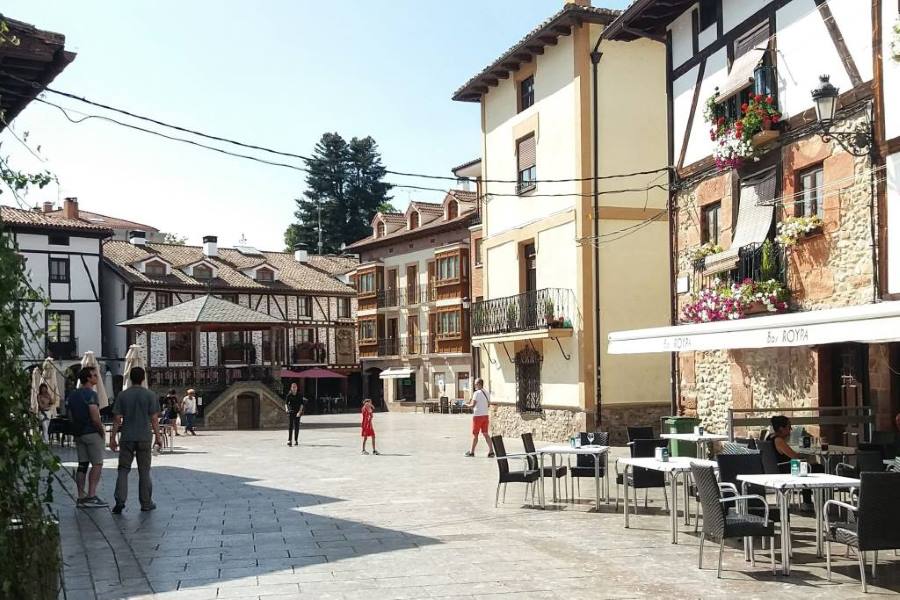
Single-province autonomous community
Captial: Logroño. Other key cities: Calahorra, Haro, Arnedo.
Wine, monasteries, and very few neighbours—La Rioja keeps things civilised and delicious.
Main Characteristics
Small but mighty, La Rioja is Spain’s wine country in all its laid-back, vineyard-dotted glory. It’s a region where the biggest decision of your day might be red or white, and where medieval monasteries stand guard over quiet villages.
Perfect for peaceful living with excellent dining.
Climate
Continental Mediterranean: hot, dry summers and cold winters, particularly in the Ebro valley.
Brief History
Historically, La Rioja was part of the medieval Kingdom of Navarre and later integrated into the Kingdom of Castile. It has long been a centre for monastic culture, winemaking, and agricultural production.
Current Economy
La Rioja’s economy is heavily oriented toward wine production, agriculture, and food processing. It enjoys a GDP per capita of €28,000 (2023), slightly above the national average, and a relatively diversified small-scale industrial base.
Cost of Living in La Rioja
The cost of living is below the national average, making it attractive for families and retirees looking for affordability with quality of life. For a family (couple with one child):
| Expense Category | La Rioja (€/month) | National Average (€/month) |
| Rent (3-bedroom apt) | 600–800 | 950–1,200 |
| Utilities | 110–130 | 130–150 |
| Food | 400–500 | 450–550 |
| Childcare | 220–320 | 300–400 |
| Transportation | 70–110 | 100–140 |
| Total | 1,400–1,860 | 1,930–2,440 |
Political Scene
La Rioja is currently governed by the Spanish Socialist Workers’ Party (PSOE). Local politics are stable and oriented toward promoting rural development and sustainable agriculture.
Customs and Culture (Highlights)
- World-renowned Rioja wines and wine routes
- Grape harvest festivals (Fiestas de la Vendimia)
- Medieval monasteries (e.g., San Millán de la Cogolla)
- Tapas tradition and hearty local gastronomy
- Key stops along the Camino de Santiago pilgrimage route
2 UNESCO World Heritage Sites in La Rioja:
- San Millán Yuso and Suso Monasteries
- Routes of Santiago de Compostela: Camino Francés (the French Path) and Routes of Northern Spain
Environmental Quality
Environmental quality is high, particularly in vineyards, rural landscapes, and protected natural zones. Urban centres like Logroño are clean and pedestrian-friendly.
Official Languages
Spanish is the only official language, and the region does not have a co-official local language. Spanish is used in education and administration.
Pros and Cons Table for Settling in La Rioja
| Pros | Cons |
| Affordable cost of living | Smaller job market, especially for specialists |
| High quality of life in rural areas | Limited international flight connections |
| Rich wine and culinary culture | Smaller expat communities |
| Safe, peaceful environment | Some areas face rural depopulation |
| Beautiful landscapes and outdoor activities | Fewer cultural events than in larger regions |
Navarra – Comunidad Foral
Single-province autonomous community
Capital: Pamplona. Other key cities: Tudela, Estella-Lizarra, Olite, Alsasua.
Where Basque meets Castilian, and bulls meet streets—Navarra walks a fine line and makes it look easy.
Main Characteristics
Navarra is a region of contrasts, from the Pyrenean peaks to the fertile Ebro Valley. It combines Basque traditions with Castilian flair and operates under its own unique legal and fiscal system. Known for Pamplona’s Running of the Bulls (and the chance to not run too), it’s prosperous, green, and surprisingly serene once the festival ends.
Climate
Varied:
- Oceanic in the north: cool, wet, and green.
- Continental/Mediterranean in the south: hot, dry summers and cold winters.
Brief History
Navarra was once an independent Kingdom of Navarra, maintaining autonomy until the 16th century. It retains significant fiscal and administrative privileges, known as “fueros”, and has its own tax authority. These historical rights make it one of Spain’s most distinctive regions.
Current Economy
Navarra has one of the strongest economies in Spain, with a GDP per capita of €34,000 (2023). It is highly industrialised, particularly in the automotive, renewable energy, and agri-food sectors. The region enjoys low unemployment and robust investment in R&D.
Cost of Living in Navarra
Slightly above the national average, especially in Pamplona, the capital. For a family (couple with one child):
| Expense Category | Navarra (€/month) | National Average (€/month) |
| Rent (3-bedroom apt) | 850–1,200 | 950–1,200 |
| Utilities | 120–140 | 130–150 |
| Food | 450–550 | 450–550 |
| Childcare | 300–400 | 300–400 |
| Transportation | 100–140 | 100–140 |
| Total | 1,820–2,430 | 1,930–2,440 |
Political Scene
Navarra is currently governed by a centre-left coalition led by the Spanish Socialist Workers’ Party (PSOE) in alliance with regionalist parties. The region’s political landscape balances Spanish and Basque identities, with debates around language and autonomy remaining prominent.
Customs and Culture (Highlights)
- San Fermín Festival in Pamplona (Running of the Bulls)
- Basque and Navarrese music, dance, and rural sports
- Romanesque churches and medieval castles
- Renowned local gastronomy: vegetables, lamb, and Navarra wines
- Part of the Camino de Santiago pilgrimage route
2 UNESCO World Heritage Sites in Comunidad Foral de Navarra:
- Routes of Santiago de Compostela: Camino Francés (the French Path) and Routes of Northern Spain
- Pyrenees – Mont Perdu (shared with Aragon and France)
Environmental Quality
Navarra boasts very high environmental standards, especially in the Pyrenees and across its protected natural parks. It is a national leader in renewable energy generation and green public transport.
Official Languages
- Spanish is official throughout the region.
- Basque (Euskara) is co-official in the northern part of Navarra (only), where it is also used in education and public institutions.
Pros and Cons Table for Settling in Navarra
| Pros | Cons |
| High quality of life and public services | Higher cost of living in Pamplona |
| Strong economy and job market | Smaller expat community |
| Rich traditions and festivals | Basque language predominance in some areas |
| Excellent natural surroundings | Winters can be cold in the north |
| Safe, family-friendly environment | Some areas are rural and less connected |
País Vasco – Euskadi (Basque Country)
Basque Provinces in Spain
The Basque Country spans both sides of the Pyrenees, with provinces in France and in Spain, where it comprises the provinces of Álava, Gipuzkoa, and Bizkaia.
If your idea of paradise involves lifting stones for sport and elevating food to near-religious status, the Basque Country might just be your promised land.
Main Characteristics
The Basque Country is intensely proud, deliciously different, and built on centuries of tradition—plus a Michelin star or twenty. It speaks its own language (Euskara), brews its own cider, and doesn’t just eat—it worships food. From the dramatic cliffs of Getaria, the polished pintxos bars of San Sebastián, to the steel and glass of Bilbao’s Guggenheim museum, this region blends power and precision, whether it’s in rural sports or in the kitchen.
Come for the pintxos, stay for the philosophy behind them.
Climate
- Oceanic: mild, rainy winters and cool, damp summers.
Brief History
The Basque Country has maintained a strong cultural identity throughout history, resisting Romanisation and later forging a powerful industrial base in modern Spain. It has significant fiscal autonomy and self-governance, with a robust regional parliament and police force (Ertzaintza).
Current Economy
One of the wealthiest regions in Spain, with a GDP per capita of €36,000 (2023). The economy is built on:
- Advanced industry (automotive, engineering, aerospace)
- Technology and research
- Finance and public administration
- Tourism (especially in San Sebastián)
Cost of Living in the Basque Country – Euskadi
Higher than the national average, particularly in Bilbao and San Sebastián. For a family (couple with one child):
| Expense Category | País Vasco (€/month) | National Average (€/month) |
| Rent (3-bedroom apt) | 1,100–1,600 | 950–1,200 |
| Utilities | 130–150 | 130–150 |
| Food | 500–650 | 450–550 |
| Childcare | 350–450 | 300–400 |
| Transportation | 100–150 | 100–140 |
| Total | 2,180–3,000 | 1,930–2,440 |
Political Scene
Currently governed by the Basque Nationalist Party (PNV) in coalition with the Spanish Socialist Workers’ Party (PSOE). The political atmosphere is generally stable, with occasional debates around full independence.
Customs and Culture (Highlights)
- Euskara (Basque language) widely spoken and taught
- Pintxos and world-class cuisine (including multiple Michelin-starred restaurants)
- Unique Basque sports (e.g. stone lifting, pelota)
- San Sebastián Film Festival
- Modernist and industrial architecture (e.g. Guggenheim Museum Bilbao)
- UNESCO World Heritage Site in the Basque Country (shared with other regions): Routes of Santiago de Compostela: Camino Francés (the French Path) and Routes of Northern Spain
Environmental Quality
Very high, with green urban spaces, protected coastlines, and excellent waste management. Public transport is efficient and eco-conscious.
Official Languages
- Spanish and Basque (Euskara) are co-official.
- Basque is used extensively in public life, especially in Gipuzkoa and Bizkaia.
Pros and Cons Table for Settling in País Vasco
| Pros | Cons |
| High standard of living and safety | High cost of living in main cities |
| Strong job market and public services | Basque language predominance in education |
| Rich culture and world-class cuisine | Rainy, cool climate |
| Excellent infrastructure and transport | Smaller expat communities |
| Beautiful natural surroundings | Some areas have higher housing demand |
Región de Murcia
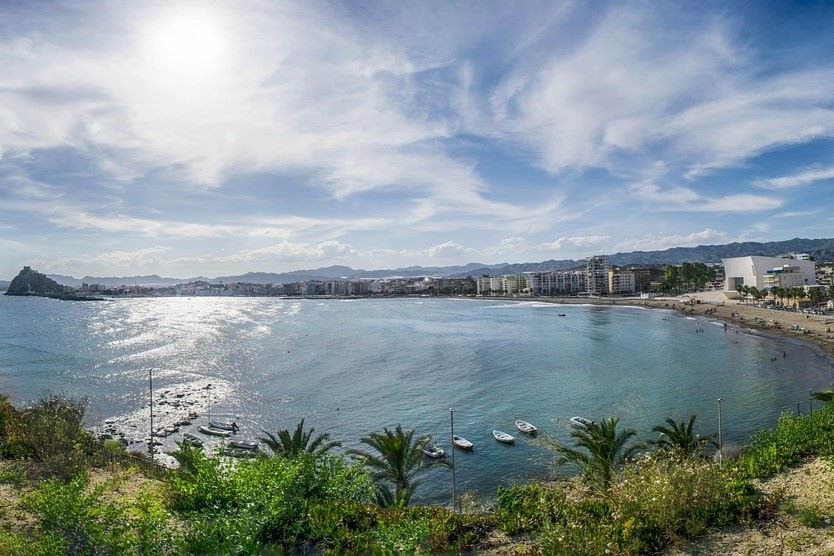
Single-province autonomous community
Capital: Murcia. Other main cities: Cartagena, Lorca, Yecla.
Some call it the orchard of Europe. Others just like that you can still find a beach parking spot.
Main Characteristics
Murcia doesn’t shout—it quietly grows your salad and invites you to the coast. This sun-soaked region combines agricultural richness with low-key Mediterranean living.
Cartagena brings Roman drama; La Manga brings the beach towels.
It’s affordable, warm, and increasingly popular with expats who want sunshine without the selfie sticks.
Climate
- Mediterranean: hot, dry summers and mild winters.
Brief History
Murcia has a diverse historical background, shaped by Iberian, Roman, Muslim, and Christian influences. Founded in the 9th century under Moorish rule, the city of Murcia became a prominent cultural and trade hub. It later flourished under Christian kings, maintaining its Baroque heritage and orchard-based economy.
Current Economy
- Agriculture is a major pillar, especially fruit, vegetables, and flowers (Murcia is known as “the orchard of Europe”)
- Logistics and agri-tech
- Tourism along the Costa Cálida (La Manga, Mar Menor)
- Light industry and export
GDP per capita is €22,500 (2023), which is slightly below the national average. The economy is growing but still shows dependency on seasonal sectors.
Cost of Living in the Region of Murcia
Lower than the national average. For a family (couple with one child):
| Expense Category | Murcia (€/month) | National Average (€/month) |
| Rent (3-bedroom apt) | 650–900 | 950–1,200 |
| Utilities | 110–130 | 130–150 |
| Food | 400–500 | 450–550 |
| Childcare | 220–320 | 300–400 |
| Transportation | 80–120 | 100–140 |
| Total | 1,460–1,970 | 1,930–2,440 |
Political Scene
Currently governed by the centre-right Popular Party (PP). Murcia tends to vote conservatively, and regional policy often focuses on water management and agricultural development.
Customs and Culture (Highlights)
- Fiestas de Primavera (Spring Festival)
- Semana Santa processions in Murcia and Lorca
- Traditional huerta (orchard) cuisine and markets
- Baroque architecture
- Beaches and salt lagoons such as the Mar Menor
- UNESCO World Heritage Site in the Murcia Region: Rock Art of the Mediterranean Basin on the Iberian Peninsula
Environmental Quality
Generally high, especially in inland natural parks and protected marine areas. However, the Mar Menor faces significant environmental stress due to overdevelopment and agricultural runoff.
Official Languages
- Spanish is the only official and widely used language.
Pros and Cons Table for Settling in Murcia
| Pros | Cons |
| Affordable cost of living | Job market focused on agriculture and tourism |
| Mediterranean climate and beaches | Water scarcity in some municipalities |
| Rich local traditions and festivals | Fewer high-tech jobs than in larger regions |
| Fresh produce and cuisine | Public transport limited in rural areas |
| Family-friendly environment | Some areas face environmental challenges |
Ceuta (Autonomous City)
Single- autonomous city on the African continent
A tiny slice of Spain on the edge of Africa—where Europe meets Morocco, and daily life comes with a panoramic view of two continents.
Main Characteristics
Ceuta is compact, strategic, and culturally rich. Perched on the North African coast, it offers a unique blend of Spanish, Arab, Jewish, and Hindu influences—and the possibility of popping over to Morocco for lunch (or a tagine). With regular ferry links to Algeciras and a multicultural spirit woven into daily life, Ceuta feels like nowhere else in Spain: fortified, sunlit, and full of surprising contrasts.
Climate
- Mediterranean: warm, dry summers and mild, rainy winters.
Brief History
Ceuta’s history spans Phoenician, Roman, Arab, Portuguese, and Spanish rule. It became part of Spain definitively in the 17th century, and its unique cultural blend reflects centuries of coexistence and trade. Its status as a Spanish enclave in Africa is both historic and geopolitical.
Current Economy
Ceuta’s economy depends primarily on:
- Port logistics and maritime trade
- Retail and cross-border commerce
- Public administration and military presence
- Tourism and services
It also enjoys free port (puerto franco) status, with special tax advantages to promote trade. GDP per capita is €22,751 (2023), slightly below the national average. However, professional job opportunities remain limited.
Cost of Living in Ceuta
Generally lower than in most mainland cities, especially in housing and basic services. For a family (couple with one child):
| Expense Category | Ceuta (€/month) | National Average (€/month) |
| Rent (3-bedroom apt) | 650–850 | 950–1,200 |
| Utilities | 100–120 | 130–150 |
| Food | 380–480 | 450–550 |
| Childcare | 220–320 | 300–400 |
| Transportation | 70–100 | 100–140 |
| Total | 1,420–1,870 | 1,930–2,440 |
Political Scene
Ceuta is governed by the centre-right Popular Party (PP). Politics often focus on border control, security, and intercultural integration, given the city’s complex demographic dynamics.
Customs and Culture (Highlights)
- Multicultural religious celebrations: Christian, Muslim, Jewish, and Hindu
- Military traditions and fortress architecture
- Port cuisine with Mediterranean and North African influences
- Unique festivals such as Fiestas Patronales and Hindu Diwali
- Blend of languages, music, and traditional crafts
Environmental Quality
Ceuta is highly urbanised, with limited green space due to geographic constraints. Coastal areas and nearby hills offer natural escapes, but population density and development challenge sustainability.
Official Languages
- Spanish (with Andalusian accent) is the sole official language and used in all education and public administration.
Pros and Cons Table for Settling in Ceuta
| Pros | Cons |
| Multicultural environment | Geographical isolation from mainland Spain |
| Lower cost of living than the national average | Limited job market, especially for professionals |
| Unique blend of cultures and cuisines | Political tensions at the border |
| Mild climate year-round | Limited higher education and healthcare options |
| Tax advantages for residents | Small size limits leisure and cultural offerings |
Melilla (Autonomous City)
Single- autonomous city on the African continent
Think Spanish architecture, North African vibes, and a geography lesson rolled into one.
Main Characteristics
Melilla, perched on the edge of North Africa’s Mediterranean coast, is a city of forts, colours, and cultures. It has more modernist architecture than you’d expect for its size, and more languages spoken in its streets than most textbooks could keep up with.
It’s Spain, but with a twist—and a ferry schedule to the Mainland.
Climate
- Mediterranean: warm, dry summers and mild, wet winters.
Brief History
Melilla has a rich and strategic past, having been occupied by Phoenicians, Romans, Byzantines, and Arabs before coming under Spanish rule in 1497. It has long served as a military outpost and a commercial hub, with a fortified old town that tells the story of centuries of multicultural coexistence.
Current Economy
Melilla’s economy is centred around:
- Public administration and military employment
- Retail and port logistics
- Tourism and local commerce
- Cross-border trade
As a free port (puerto franco), Melilla benefits from tax exemptions and customs advantages. GDP per capita is €19,000 (2023), below the national average. Economic opportunities are somewhat limited, particularly for highly skilled professionals.
Cost of Living in Melilla
The cost of living is generally lower than in mainland Spain, with affordable housing and lower general expenses. For a family (couple with one child):
| Expense Category | Melilla (€/month) | National Average (€/month) |
| Rent (3-bedroom apt) | 600–800 | 950–1,200 |
| Utilities | 100–120 | 130–150 |
| Food | 380–480 | 450–550 |
| Childcare | 200–300 | 300–400 |
| Transportation | 70–100 | 100–140 |
| Total | 1,350–1,800 | 1,930–2,440 |
Political Scene
Melilla is currently governed by a centre-right coalition led by the Popular Party (PP). Local politics are shaped by border security, immigration policy, and the city’s economic reliance on public employment and trade.
Customs and Culture (Highlights)
- Celebrations from Christian, Muslim, Jewish, and Hindu traditions
- Multicultural festivals and interfaith coexistence
- Fortified old town and modernist architecture
- Fusion cuisine of North African and Mediterranean origin
- Annual events such as the Semana Náutica (nautical week)
Environmental Quality
Melilla is highly urbanised, with some green spaces and coastal areas. Its compact size and high population density limit green infrastructure. Environmental concerns include urban pressure and resource limitations.
Official Languages
- Spanish is the only official language and the main language of education, administration, and media.
Pros and Cons Table for Settling in Melilla
| Pros | Cons |
| Multicultural, tolerant society | Geographical isolation from mainland Spain |
| Affordable cost of living | Limited job market and career opportunities |
| Unique blend of cultures and cuisines | Some political and social tensions |
| Mild climate year-round | Limited higher education and healthcare options |
| Tax and customs advantages | Small size limits leisure and cultural offerings |
📌 Conclusions: Choosing Your Place in Spain
Spain’s 17 autonomous communities and 2 autonomous cities offer remarkable diversity in geography, culture, language, economy, and lifestyle.
From the mountainous green north of Asturias and Galicia, to the sun-soaked Costa Blanca and Andalucía, or the unique island environments of Baleares and Canarias—there’s truly something for everyone.
Whether you’re looking for cosmopolitan city life, peaceful rural retreats, or a family-friendly coastal town, understanding the pros and cons of each region can help you make an informed decision about where to settle.
🔵 Thinking of moving to Spain but don’t know where to begin?
Start with our Moving to Spain Starter Guide – a clear, step-by-step roadmap designed to help you plan with confidence.
🟡 Already set your sights on a region?
If it’s Costa Blanca, don’t miss our dedicated sections: Living in Alicante and Costa Blanca Lifestyle – packed with local insights and expat tips.
🟠 Need practical info on visas, paperwork, and settling in?
Head to our Moving to Spain section for everything you need to know – from getting your NIE to registering on the padrón and more.
🟢 Thinking of buying property in Spain?
Make sure you understand the essentials first – we break it all down in our property buying guide for foreigners.
FAQs for People Considering a Move to Spain – Preliminary Research
1. Which is the best region in Spain for digital nomads?
The Comunidad Valenciana, Cataluña, and Madrid are top choices for digital nomads due to their excellent internet infrastructure, vibrant international communities, a wide range of co-working spaces, and rich cultural life. Barcelona and Valencia in particular offer strong start-up ecosystems and English-friendly services, while Madrid boasts major global connectivity. For those seeking a quieter or more affordable base, towns in Andalucía, Aragón, or the Canary Islands also provide appealing alternatives with good infrastructure and a slower pace of life.
2. Where can I find the lowest cost of living in Spain?
Extremadura, Castilla-La Mancha, and La Rioja consistently offer the most affordable housing and daily expenses, especially in smaller towns.
3. Which areas are best for expat retirees?
Many retirees favour Alicante (Costa Blanca), Andalucía (Costa del Sol, Costa Tropical, Costa de la Luz), and the Canary Islands for their warm climate, good healthcare access, and active expat communities. Valencia, Murcia, and some parts of Cataluña are also increasingly popular thanks to their combination of affordability and coastal charm. For those looking for a quieter, more nature-oriented retirement, Galicia, Asturias, or Castilla y León may be appealing for their slower pace of life and green surroundings.
4. What’s the job market like in rural regions?
Rural areas often have fewer job opportunities in tech or international sectors, but may offer roles in agriculture, education, tourism, or healthcare—especially in underpopulated provinces.
5. Can I live in Spain without speaking Spanish?
It’s possible in tourist-heavy regions like Costa Blanca, Costa del Sol, Barcelona, or Valencia city, where English is commonly spoken. However, for full integration and access to services, learning Spanish is strongly recommended.
💬 Living in Spain’s Regions: Real Experiences from Expats – Share your story!
Have you lived in any of Spain’s autonomous communities?
What did you love (or not love) about it?
Share your insights in the comments below and help future expats and newcomers make the best possible decision.
Your experience could be the guidance someone else needs.

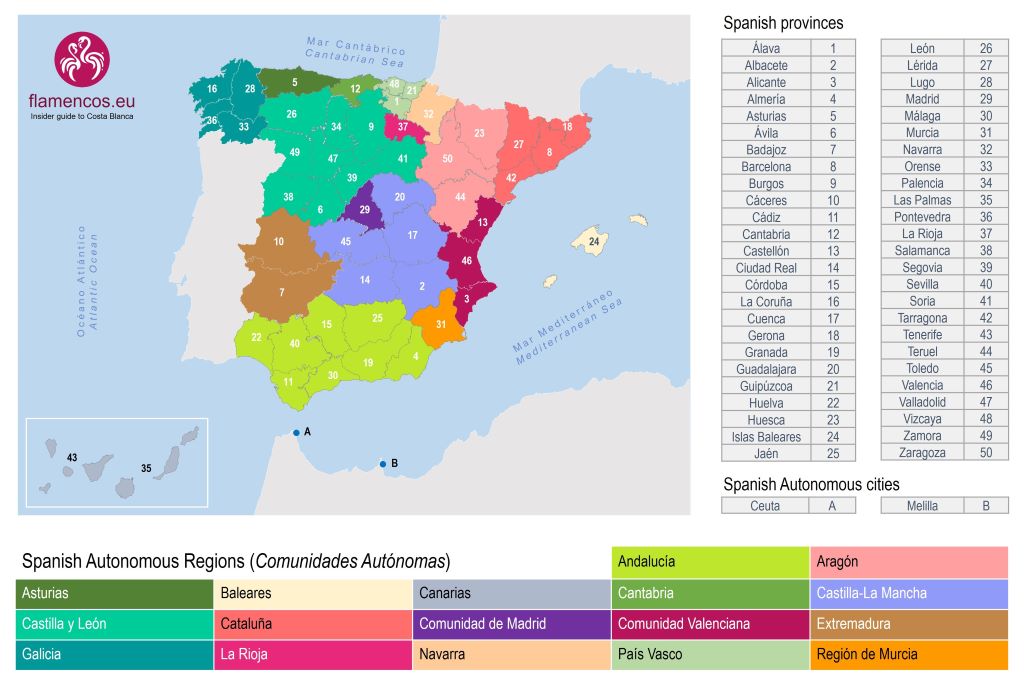
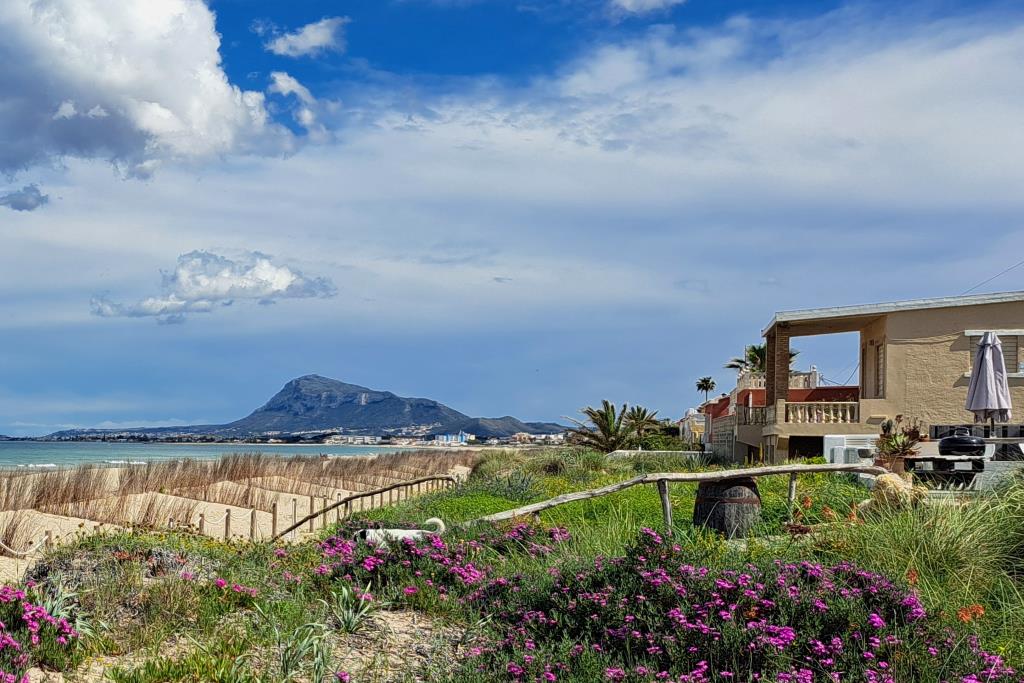
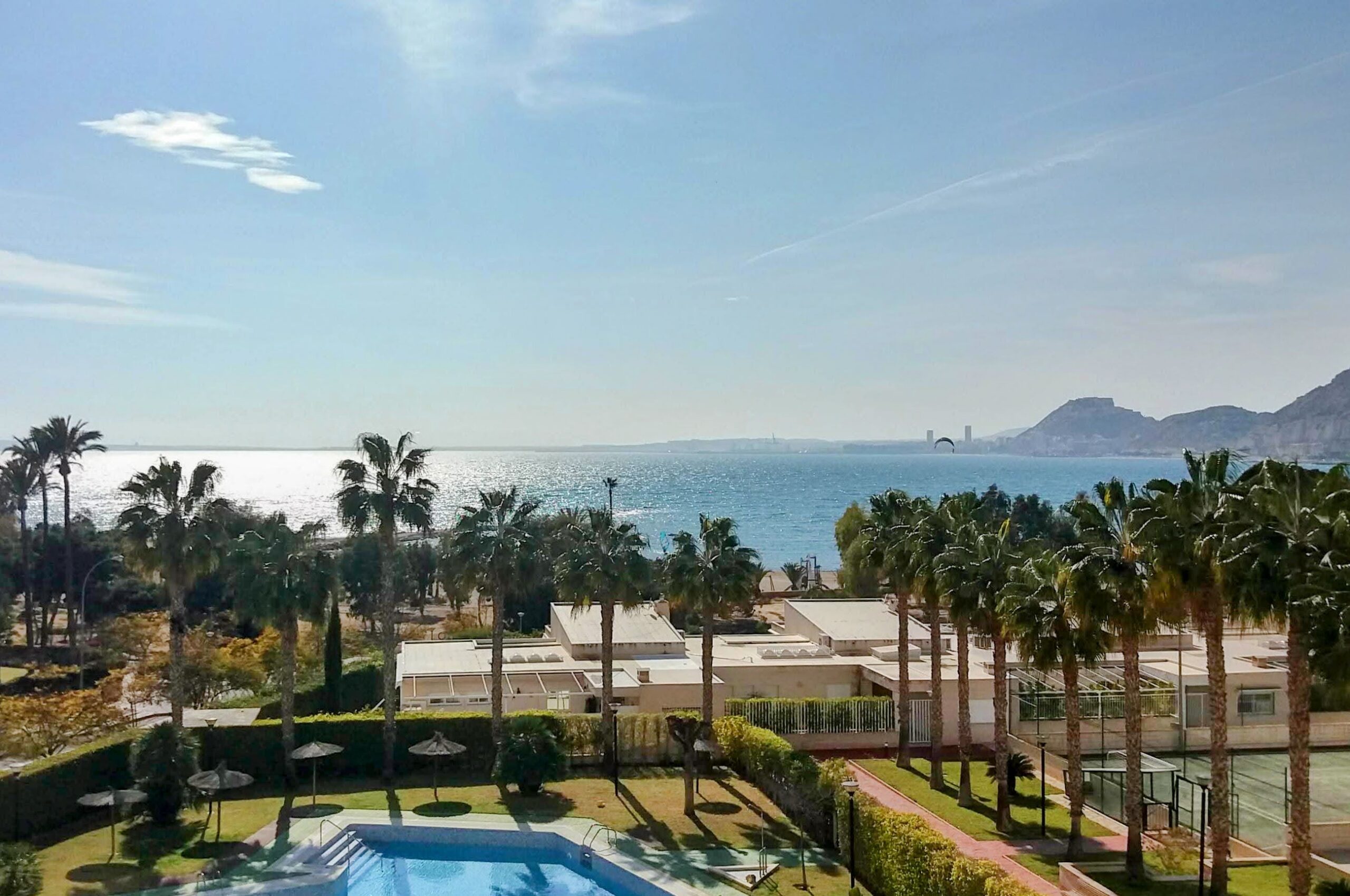
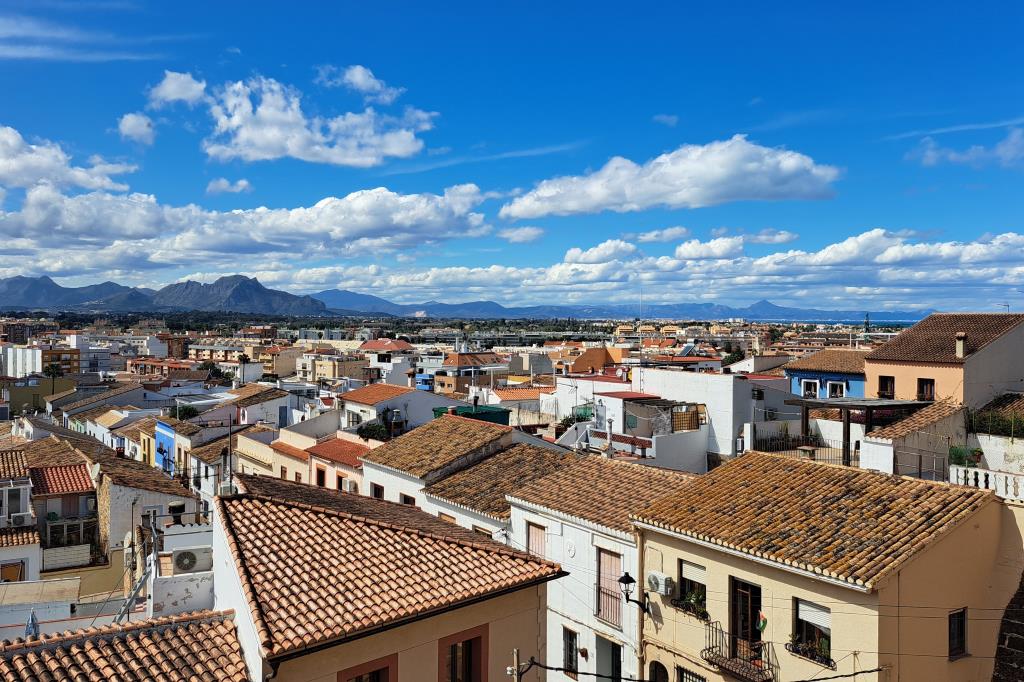


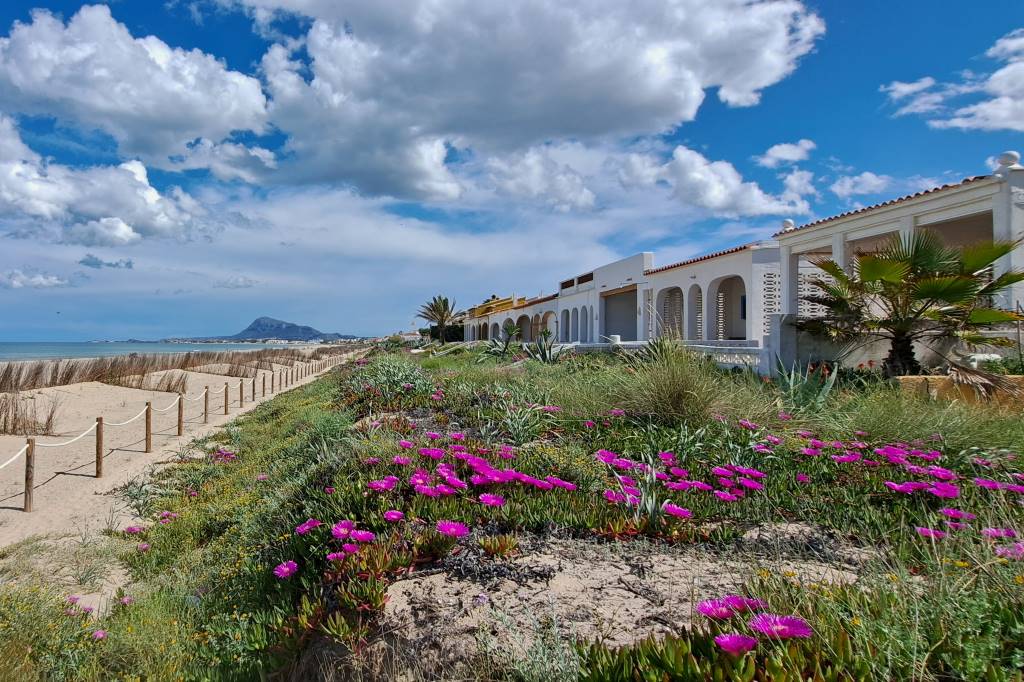

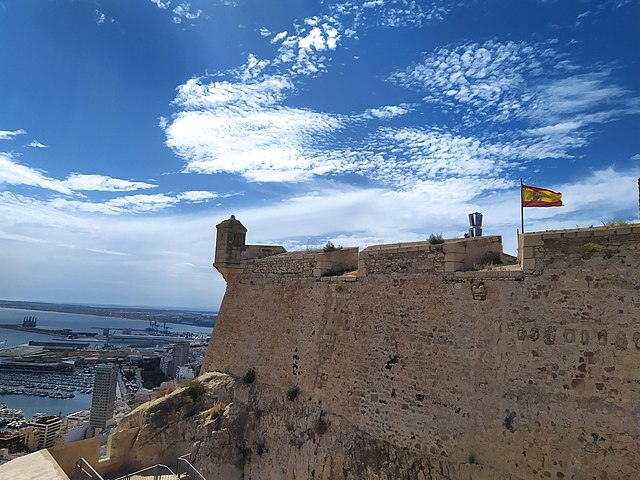
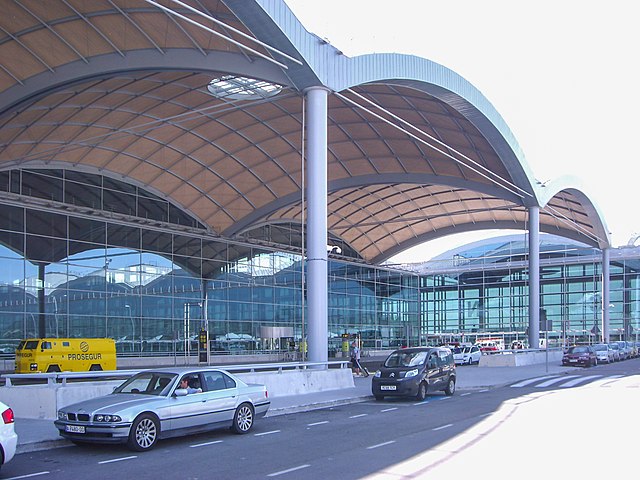
Leave a Reply
You must be logged in to post a comment.